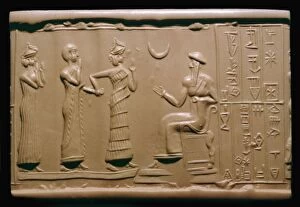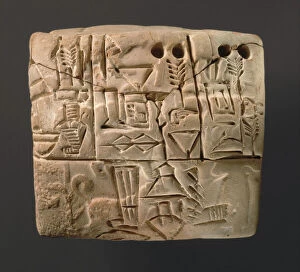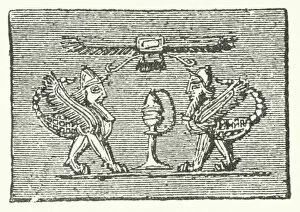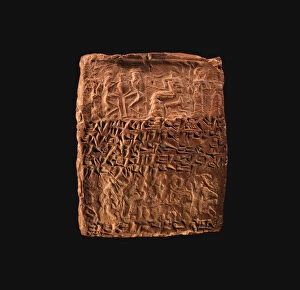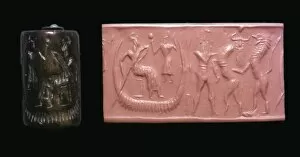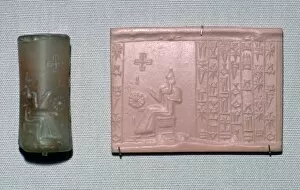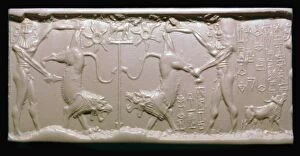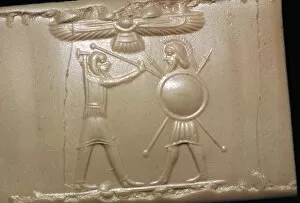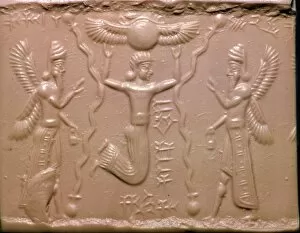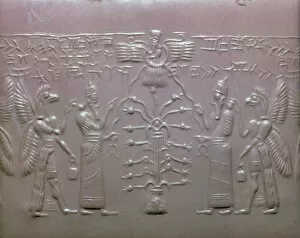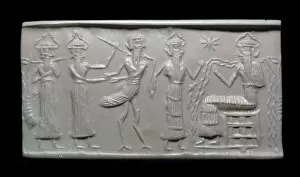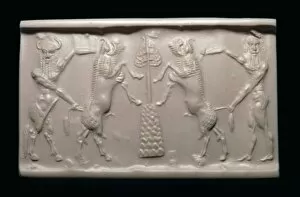Cylinder Seal Collection
The ancient art of the cylinder seal has left behind a rich tapestry of history and culture
For sale as Licensed Images
Choose your image, Select your licence and Download the media
The ancient art of the cylinder seal has left behind a rich tapestry of history and culture. From Sumerian to Akkadian civilizations, these small yet intricate objects have provided us with glimpses into the lives and beliefs of our ancestors. One such example is a Sumerian cylinder-seal impression depicting a governor being introduced to the king. This scene captures the hierarchical structure of society during that time, showcasing the importance placed on authority and respect. Another fascinating artifact is a cuneiform tablet showing accounts of barley distribution from around 3000 BC. This clay tablet provides evidence of early economic systems, revealing how resources were managed and allocated in ancient societies. Intriguing depictions can also be found in engravings like "The Scorpion Men" from the Epic Of Gilgamesh. These mythical creatures symbolize both danger and protection, reflecting the complex beliefs held by Mesopotamians regarding supernatural beings. Cylinder seals were not only used for impressions but also served as decorative elements on cases. One such case impressed with four cylinder seals dates back to the 20th-19th century BC. The intricate designs on these seals showcase skilled craftsmanship and artistic expression. Moving beyond Mesopotamia, we find examples like a Middle Minoan III Period - Late Minoan I Period cylinder seal from Crete. Its unique style reflects local cultural influences while still incorporating motifs seen in other regions during this period. Akkadian civilization contributed significantly to cylinder seal art as well. Impressions featuring individuals like Adda, an esteemed scribe from the 22nd century BC, provide insights into professions and social status at that time. Mythology was another popular theme depicted on these seals; one notable example being an Akkadian representation of the flood epic – an event shared across various cultures worldwide but interpreted differently in each context. Materials used for creating these seals varied greatly too.

